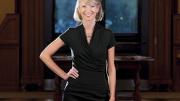The 2011 Nobel Prize in economics has been awarded to Thomas J. Sargent, Ph.D. ’68, senior fellow at the Hoover Institution, based at Stanford, and Berkley professor of economics and business at New York University, and his doctoral classmate Christopher A. Sims ’63, Ph.D. ’68, Helm professor of economics and banking at Princeton. They were cited for “empirical research on cause and effect in the macroeconomy”—analyzing the effects of shocks and policy shifts on economic output, inflation, employment, and investments.
According to the Nobel summary,
The economy is constantly affected by unanticipated events. The price of oil rises unexpectedly, the central bank sets an interest rate unforeseen by borrowers and lenders, or household consumption suddenly declines. Such unexpected occurrences are usually called shocks. The economy is also affected by more long-run changes, such as a shift in monetary policy towards stricter disinflationary measures or fiscal policy with more stringent budget rules. One of the main tasks of macroeconomic research is to comprehend how both shocks and systematic policy shifts affect macroeconomic variables in the short and long run. Sargent’s and Sims’s awarded research contributions have been indispensable to this work. Sargent has primarily helped us understand the effects of systematic policy shifts, while Sims has focused on how shocks spread throughout the economy.
The more detailed news release said:
Thomas Sargent has shown how structural macroeconometrics can be used to analyze permanent changes in economic policy. This method can be applied to study macroeconomic relationships when households and firms adjust their expectations concurrently with economic developments. Sargent has examined, for instance, the post-World War II era, when many countries initially tended to implement a high-inflation policy, but eventually introduced systematic changes in economic policy and reverted to a lower inflation rate.
Christopher Sims has developed a method based on so-called vector autoregression to analyze how the economy is affected by temporary changes in economic policy and other factors. Sims and other researchers have applied this method to examine, for instance, the effects of an increase in the interest rate set by a central bank. It usually takes one or two years for the inflation rate to decrease, whereas economic growth declines gradually already in the short run and does not revert to its normal development until after a couple of years.
Although Sargent and Sims carried out their research independently, their contributions are complementary in several ways. The laureates’ seminal work during the 1970s and 1980s has been adopted by both researchers and policymakers throughout the world. Today, the methods developed by Sargent and Sims are essential tools in macroeconomic analysis.
For perspective on the winners's work—at a time of great economic shocks and extensive, if not necessarily effective, policy response, see the New York Times analysis and this commentary by Derek Thompson of TheAtlantic.com.
With these awards, which conclude the 2011 Nobel season, seven alumni have been recognized. Including the economics laureates, they are:
- Ellen Johnson Sirleaf, M.P.A. '71, LL.D. '11, who shared the Nobel Peace Prize;
- A co-winner of the prize in medicine, the late Ralph M. Steinman, M.D. ’68; and
- in physics Saul Perlmutter ’81, Brian P. Schmidt, Ph.D. ’93, and Adam G. Riess, Ph.D. ’96.








